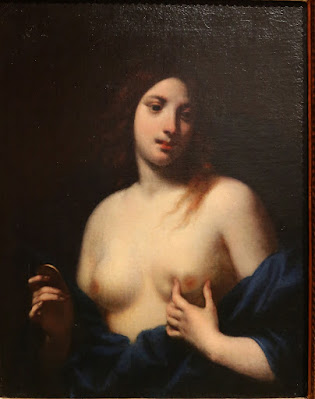 |
| Luca Signorelli Story of Coriolanus ca. 1509 detached fresco National Gallery, London |
 |
| Luca Signorelli Story of Coriolanus (detail) ca. 1509 detached fresco National Gallery, London |
 |
| Franciabigio Marriage of the Virgin 1513 fresco Basilica della Santissima Annunziata, Florence |
 |
| Franciabigio Marriage of the Virgin (detail) 1513 fresco Basilica della Santissima Annunziata, Florence |
 |
| Franciabigio Marriage of the Virgin (detail) 1513 fresco Basilica della Santissima Annunziata, Florence |
 |
| Franciabigio Marriage of the Virgin (detail) 1513 fresco Basilica della Santissima Annunziata, Florence |
"The fatigues that a man endures in this life in order to raise himself from the ground and protect himself from poverty, succouring not only himself but also his nearest and dearest, have such virtue, that the sweat and the hardships become full of sweetness, and bring comfort and nourishment to the minds of others, insomuch that Heaven, in its bounty, perceiving one drawn to a good life and to upright conduct, and also filled with zeal and inclination for the studies of the sciences, is forced to be benign and favourably disposed towards him beyond its wont; as it was, in truth, towards the Florentine painter Franciabigio. This master, having applied himself to the art of painting for a just and excellent reason, laboured therein not so much out of a desire for fame as from a wish to bring assistance to his needy relatives; and having been born in a family of humble artisans, people of low degree, he sought to raise himself from that position."
" . . . he painted the Marriage of Our Lady, wherein may be recognized the supreme faith of Joseph, who shows in his face as much awe as joy at his marriage with her. Besides this, Francia painted there one who is giving him some blows, as is the custom in our own day, in memory of the wedding; and in a nude figure he expressed very happily the rage and disappointment that drive him to break his rod, which had not blossomed. . . . So ardent was [this painter's] love for the matters of art, that there was no summer day on which he did not draw some study of a nude figure from the life in his workroom, and to that end he always kept men in his pay. . . . And, in truth, although Franciabigio had a somewhat dainty manner, because he was very laborious and constrained in his work, nevertheless he showed great care and diligence in giving the true proportions of art to his figures."
"He would never leave Florence, because, having seen some works by Raffaello da Urbino, and feeling that he was not equal to that great man and to many others of supreme renown, he did not wish to compete with craftsmen of such rare excellence. In truth, the greatest wisdom and prudence that a man can possess is to know himself, and to refrain from exalting himself beyond his true worth. And, finally, having acquired much by constant work, for one who was not endowed by nature with much boldness of invention or with any powers but those he had gained by long study, he died in the year 1524 at the age of forty-two."
– from Lives of the Painters, Sculptors and Architects by Giorgio Vasari (1568), translated by Gaston du C. de Vere (1912)
 |
| Francesco Morone Baptism of Christ 1517 detached fresco Museo degli affreschi Giovanni Battista Cavalcaselle, Verona |
 |
| Raphael Putto with Garland before 1520 detached fresco Accademia di San Luca, Rome |
 |
| Bernardino Luini The Nativity ca. 1520-25 fresco transferred to canvas Musée du Louvre |
 |
| Giovanni Battista Zelotti Concert ca. 1560-70 detached fresco Museo di Castelvecchio, Verona |
 |
| Giovanni Battista Naldini Pietà with Mary Magdalen and St Nicodemus 1566 detached fresco Galleria dello Spedale degli Innocenti, Florence |
 |
| Santi di Tito Building of the Temple of Solomon ca. 1570-71 fresco Basilica della Santissima Annunziata, Florence |
 |
| Santi di Tito Building of the Temple of Solomon (detail) ca. 1570-71 fresco Basilica della Santissima Annunziata, Florence |
 |
| Orazio Samacchini Moses and the Bronze Serpent ca. 1570-76 apse fresco Cattedrale di Parma |
 |
| Niccolò Circignani (il Pomarancio) Pietà ca. 1575 fresco Chiesa di San Francesco, Volterra |












































